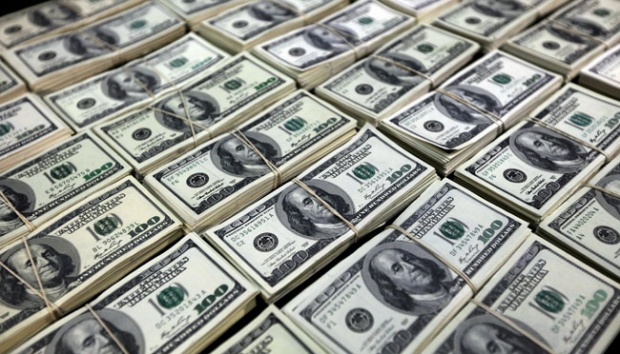
TEMPO.CO, Jakarta – Nowadays, currency trading plays a vital role in facilitating global commerce and investment. As individuals and businesses seek to maximize their benefits, understanding the most traded currencies becomes essential for gaining valuable insights into the complexities of the foreign exchange market.
10 Most Traded Currencies in the World
Citing from FOREX, this article will delve into the top 10 traded currencies globally. The list is as follows:
1. U.S. dollar (USD)
With an average trading volume of $6.6 trillion per day, the U.S. dollar tops the list of the most traded currencies in the world. This currency has been the most dominant since World War II, transforming into the global reserve currency through the 1944 Bretton Woods Conference.
Today, the USD plays a significant role in the global financial system as the primary reserve currency held by central banks worldwide. It also serves as a benchmark for other currencies and is used as the official currency in countries like Ecuador and Micronesia.
2. Euro (EUR)
As the second leading currency in foreign exchange, the Euro is best known for its stability, which attracts businesses globally. Established in 1999 as a non-cash monetary unit, it introduced its currency notes and coins in 2002. Today, the EUR indicates a quite high average daily trading volume of $2.3 trillion.
It is currently the official currency of 20 countries within the European Union (EU), designed to maintain stability, reduce currency conversion risks in trade, and promote economic growth among its member countries. Additionally, the Euro is used by several African countries, particularly those with strong ties to Europe.
3. Japanese yen (JPY)
Japan has one of the largest GDPs in the world, ranking just behind China and the United States. With an average daily trading volume of $1.2 trillion, the Japanese Yen stands out for its low inflation rate, making it an appealing choice for investors and traders looking to profit from interest rate differentials through carry trade strategies.
Japan is renowned for its advanced products, including motor vehicles, electronics, and machinery, establishing the country’s industrial sector to play a crucial role in determining the value of the yen. In addition, the JPY is used to assess the economic health of the Pan-Pacific region, including countries such as Singapore, South Korea, and Thailand.
4. Pound sterling (GBP)
As one of the most traded currencies in the world, the pound sterling is exchanged globally with an average daily trading volume of $968 billion. Thanks to the Bank of England, which is actively involved in international economic affairs, the currency is now among the most stable and reliable choices for trading, investing, and setting prices for international contracts. Dating back to more than 1,200 years, GBP is used by the United Kingdom and nine additional territories.
5. Chinese renminbi (CNH)
Commonly known as the Yuan, the Chinese Renminbi is the official currency for the People’s Republic of China. It is now recognized as one of the global currencies, having been elevated to the status of an International Monetary Fund (IMF) reserve currency in 2015. This designation reflects its increasing importance in global trade and finance.
The People’s Bank of China (PBOC) oversees the Yuan, implementing a managed floating exchange rate system to maintain its value, in which the PBOC is able to stabilize the currency while also promoting market flexibility.
6. Australian dollar (AUD)
The Australian dollar is renowned as the sixth most traded currency in the world, having an average daily trading volume of $479 billion. The AUD is managed by the central bank in Australia, the Reserve Bank of Australia. The currency’s value is influenced by some factors, including the country’s raw commodity exports in the global market like iron ore, coal, and gold.
7. Canadian dollar (CAD)
Managed by the Bank of Canada (BoC), the Canadian dollar, or loonie, ranks seventh as the most traded currency in the world. With an average daily trading volume of $467 billion, the CAD is well-known as a commodity currency due to the country’s vast natural resources and raw commodity exports. Being introduced first in the early 1660s, the currency now also serves as the title of reserve currency by several central banks.
8. Swiss franc (CHF)
The Swiss Franc is recognized for its exceptional stability and strengthening ability, having gained value over the past 15 years. As one of the most traded currencies in the world, its value is heavily influenced by Switzerland’s robust economy, leading to its reputation as a safe-haven currency. The Swiss Franc is managed by the Swiss National Bank and serves as the official currency of Switzerland, as well as the de facto currency of Liechtenstein.
9. Hong Kong dollar (HKD)
The Hong Kong dollar is the official currency of the special administrative region of China, Hong Kong. In addition, it is also used to peg Macau’s currency, the pataca. First introduced in 1863, the HKD is managed by the Hong Kong Monetary Authority (HKMA) to ensure its stability. The status of Hong Kong as a leading financial hub is a key factor in the currency’s prominence on the global stage, despite not being a reserve currency.
10. New Zealand dollar (NZD)
The New Zealand dollar completes the list of most traded currencies in the world, with the majority of trading occurring in China and Australia. Key factors influencing its strong value are the country’s agricultural commodity exports and tourism. The NZD was not the first currency of New Zealand, as the New Zealand Pound held that title until 1967.
Editor’s Choice: How to Start Making Passive Income with No Money; Try These 5 Ideas!
Click here to get the latest news updates from Tempo on Google News

